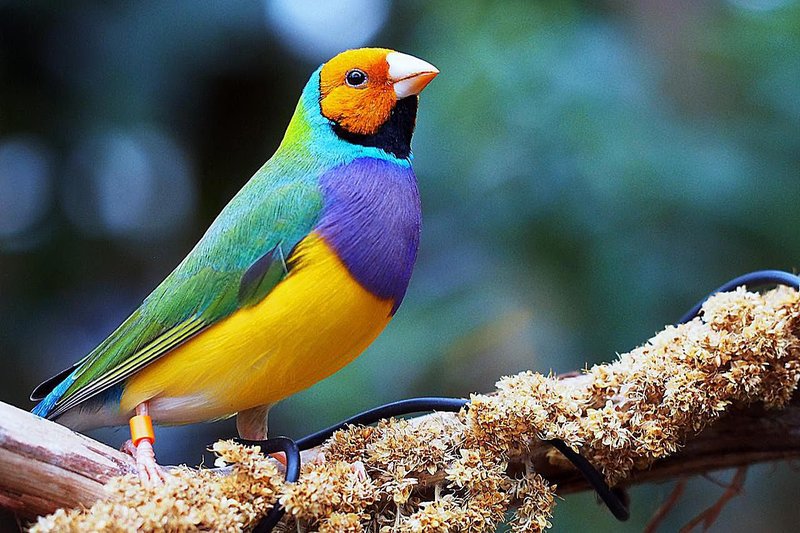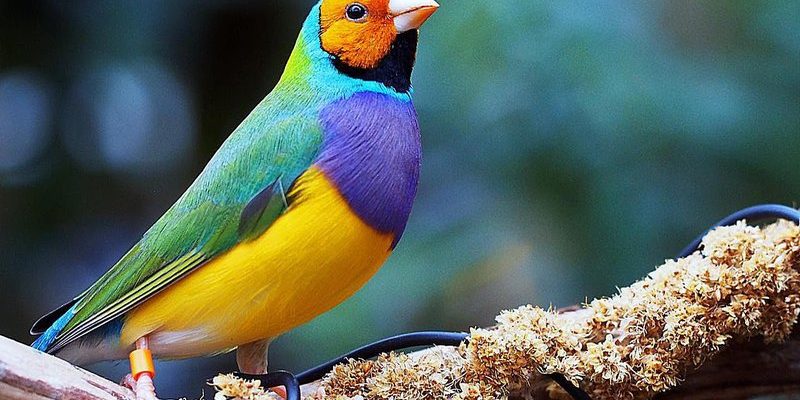
So, whether you’re an avid birdwatcher, a curious pet owner, or just someone ready to learn more about our winged friends, let’s dive into the world of the Gouldian Finch and see how it stacks up against similar bird species. Trust me, it’s more fascinating than you might think!
What Is The Gouldian Finch?
The Gouldian Finch, scientifically known as *Erythrura gouldiae*, is a small, colorful bird native to Australia. It typically measures about 4.5 to 5.5 inches in length and is a popular pet among bird enthusiasts due to its beautiful plumage and charming demeanor. You might recognize them by their bright green back, blue wings, and striking red or yellow face, depending on the color mutation.
These birds are social creatures that thrive in flocks. They enjoy being around their kind, often chirping and fluttering about in exciting displays. Honestly, watching them interact can brighten anyone’s day. They’re not just pretty faces; they also have unique behaviors that fascinate bird lovers everywhere. Their preference for grassy woodlands and open savannas makes them a joy to observe in the wild.
Comparing Physical Features
When you look closely at the Gouldian Finch, you can’t help but admire its vibrant colors. But how do these features compare to similar bird species? Let’s break it down.
- Coloration: The Gouldian Finch is known for its striking color combinations, such as bright green, blue, and red. In contrast, the Zebra Finch, another popular species, has more muted browns and grays with distinct black stripes on its head and throat.
- Size: The Gouldian Finch is slightly larger than the similar-looking Society Finch, which is about the same length but tends to have a more rounded body and a plumper appearance.
- Beak Shape: The Gouldian Finch has a short, conical beak designed for seeds, while the similar Orange-breasted Waxbill has a thinner beak that is better suited for smaller seeds and insects.
These physical differences can be subtle, but they play a significant role in identifying these finches and understanding their lifestyles.
Habitat and Distribution
The Gouldian Finch thrives in specific habitats across Australia. They prefer open grasslands and woodland edges, where they can find plenty of seeds to munch on. However, their population has declined in the wild due to habitat loss, making them a subject of conservation efforts.
In contrast, the Zebra Finch is much more widespread and adaptable. Found in a range of environments from arid zones to urban areas, they are incredibly resilient. This adaptability has allowed them to flourish in various habitats, a trait that the Gouldian Finch doesn’t share.
It’s fascinating how these birds have adapted differently to their environments. The Gouldian Finch is highly selective about its habitat, which can affect its survival as it relies heavily on specific conditions.
Behavior and Social Structure
If you’ve ever had the joy of watching finches interact, you would know that these little guys are social butterflies! The Gouldian Finch is no exception. They enjoy living in large flocks, which not only helps them feel secure but also offers socialization opportunities. Their playful interactions, often involving gentle chirping and synchronized flying, are a delightful sight.
On the other hand, the Zebra Finch also exhibits strong social behaviors, but they tend to have a more hierarchical structure within their groups. You might notice that the Zebra Finches will establish pecking orders, while the Gouldian Finches’ social dynamics are a bit more egalitarian.
This difference in social structure can influence their breeding habits, as Gouldian Finches often form monogamous pairs, whereas Zebra Finches are more likely to breed in larger, communal settings.
Dietary Preferences and Feeding Habits
Both the Gouldian Finch and similar species primarily enjoy a diet rich in seeds, but there are some differences in their preferences. The Gouldian Finch tends to favor grass seeds, particularly those from certain species like the native millet. They have a robust ability to forage for these seeds in their natural habitat, allowing them to stay healthy and vibrant.
The Zebra Finch, however, has a wider range of dietary options and can thrive on various seeds, fruits, and even vegetables. This broader diet helps them adapt more easily to different environments, which is one reason they have such a large distribution across Australia and beyond.
Understanding their dietary needs is crucial for anyone considering these birds as pets. The Gouldian Finch requires a specific diet to thrive, while the Zebra Finch may be more flexible in its feeding habits.
Caring for a Gouldian Finch as a Pet
If you’re thinking about bringing a Gouldian Finch into your home, there are some important aspects to consider. These little birds require a spacious cage filled with toys and perches for exercises, such as flying and climbing. Since they thrive in flocks, it’s often recommended to keep them in pairs or small groups to ensure they remain social and happy.
You might be wondering about their dietary needs. It’s essential to provide them with high-quality seed mixes, along with occasional fresh fruits and vegetables for added nutrients. Make sure you’re also providing a cuttlebone or mineral block to support their beak health!
And don’t forget—these vibrant birds can be prone to stress from loud noises or sudden changes in their environment. So, creating a calm space for them is key to keeping them happy and healthy.
Conservation Status and Challenges
The Gouldian Finch faces some significant challenges in the wild, primarily due to habitat destruction and competition from other species. Their reliance on specific habitats means that when these areas are disturbed or destroyed, their populations can quickly dwindle. Conservation efforts are underway to protect their habitat and raise awareness about their plight, but there’s still much work to be done.
In contrast, other species like the Zebra Finch have proven more resilient in the face of environmental changes, thanks to their adaptable nature. This difference further emphasizes the importance of habitat protection for the Gouldian Finch. Without it, we risk losing not just a beautiful bird but an essential part of our natural heritage.
In conclusion, while the Gouldian Finch shares some traits with other finches, its vibrant coloration, specific habitat preferences, and unique social behavior set it apart. By understanding these differences, we can better appreciate this charming bird and contribute to its conservation efforts. Whether you’re observing them in the wild or caring for them at home, the Gouldian Finch is indeed a treasure worth celebrating.

